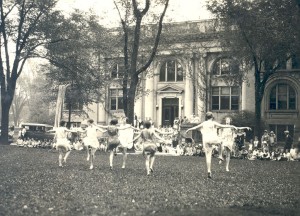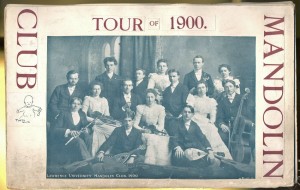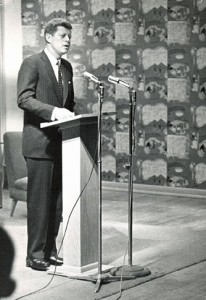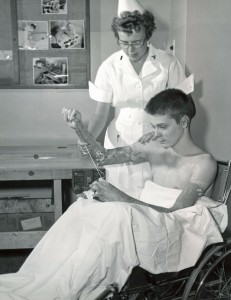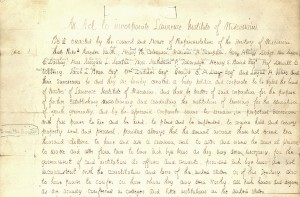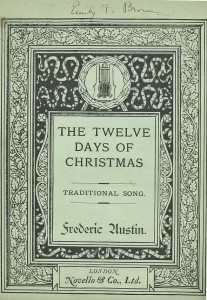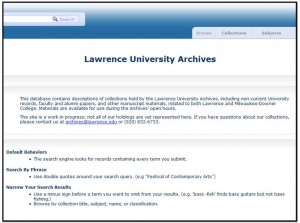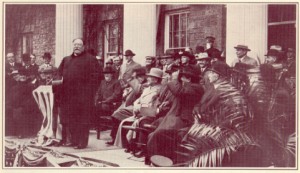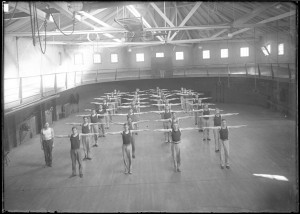
It’s that time of year again – October is American Archives Month! We have activities lined up for each week of this month to celebrate the occasion:
October 1st-7th: Photo caption contest! If you have a caption in mind for the photo at left, submit your entry at the display on the first floor of the library anytime this week. Library staff will judge the entries, and the contest winner will receive a gift card for Harmony Cafe.
October 8th-12th: A Facebook fashion contest: from a selection of Archives images depicting Lawrence students, faculty, and staff through the years, who has the best sense of style?
Wednesday, October 17th, 11am-1pm: Archives on the road: visit our table on the 2nd floor of the Campus Center to view some historic materials or ask a question about LU or Milwaukee-Downer history.
Thursday, October 25th, 4:30-5pm: “Haunted Lawrence” at Things Worth Knowing in the library. Based on our “Haunted Lawrence” tour, with information, stories, and images from the Archives.
